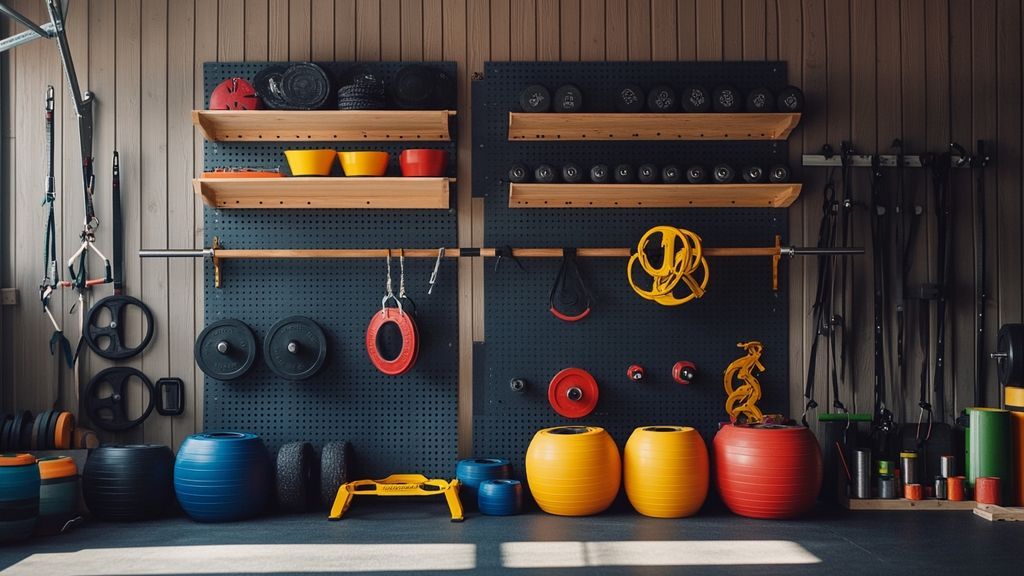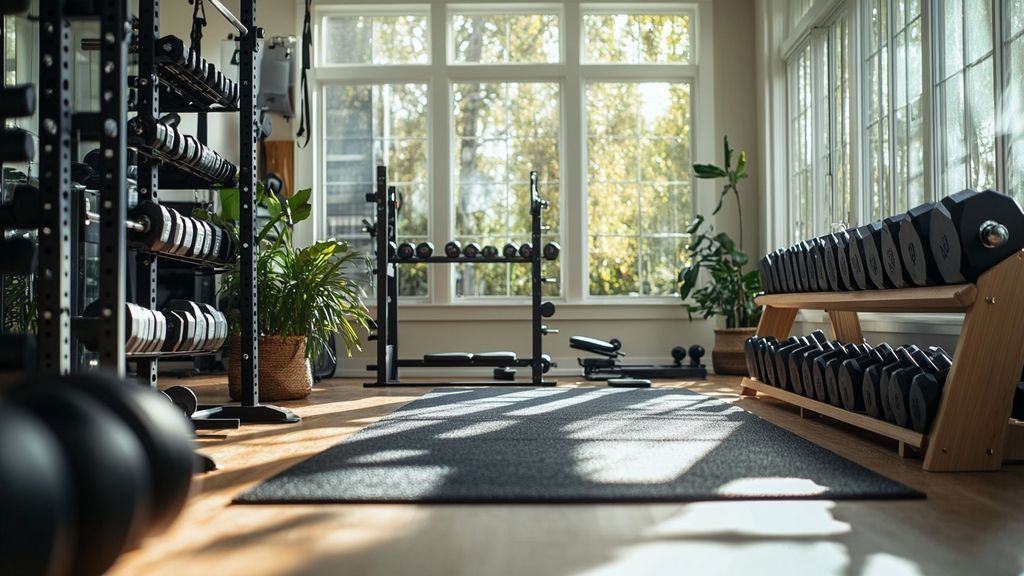Creating a garage gym can transform an underutilized space into a personal fitness haven. With the right equipment and a well-thought-out layout, you can have a gym that meets your needs and boosts your workout routine. This article explores the must-have equipment for a home garage gym, various ways to optimize your space, and how to save money while building your gym. It’s essential to invest in equipment that maximizes your workouts and is versatile enough to support different training styles. Whether you’re a beginner or a seasoned athlete, understanding what to include in your garage gym can make all the difference in achieving your fitness goals.
Creating Your Garage Gym: Finding the Right Equipment
When planning to equip your garage gym, you’ll want to prioritize versatility, quality, and space efficiency. A solid foundation includes essential items such as:
Free Weights: The Core of Your Gym
Among the first items to consider are free weights. This category encompasses barbells, dumbbells, and kettlebells. They’re favored for their versatility; you can use them for strength training, conditioning, and various exercises targeting all muscle groups. The best part? You can often find high-quality used versions through local marketplaces or online listings. Adjustable dumbbells offer great value, allowing you to modify weights without taking up too much space. Key considerations when purchasing include:
- A sturdy and durable material.
- Adjustable options for scalability.
- Weight increment variety for progressive overload.
This kind of equipment forms the backbone of effective workouts, making it an essential investment.
Cardio Equipment: Essential for Heart Health
Cardio machines are critical for those looking to improve their cardiovascular health. Options like treadmills, rowing machines, and exercise bikes can provide excellent workouts. When selecting your cardio equipment, consider your primary fitness goals and the space you have available. For individuals on a budget, you can often find second-hand cardio equipment in great condition. Key points to remember include:
- Space considerations: Ensure you have adequate area to accommodate your equipment.
- Adjustability features: Look for equipment that allows for customization based on your height and fitness levels.
- Durability and warranty: Research the brand and model to ensure it withstands frequent use.
Designing an Efficient Garage Gym Layout

Once you’ve gathered your equipment, it’s time to design an effective gym layout. Your garage should not only be functional but also motivating and welcoming. Here are some tips to create a more specialized and user-friendly environment:
Maximizing Space with Smart Organization
Efficient storage solutions are vital in a garage gym to keep the area clutter-free. Use wall-mounted racks for weights, pegboards for hanging smaller accessories, and bins for organizing items. Additionally, consider multifunctional furniture such as benches that serve both as seating and storage.
Another idea is to utilize vertical space. This may involve installing shelves or hooks for hanging items off the ground. Make sure to keep frequently used equipment easily accessible while storing less utilized fitness gear out of the way.
Integrating Natural Light and Airflow
A well-ventilated, light-filled space can significantly enhance your motivation. If your garage allows, consider adding windows or even mirrors. Not only do they make the space feel larger, but mirrors can also help you maintain proper form during workouts. An airy environment is less likely to feel claustrophobic, making your workouts more enjoyable overall.
Cost-Effective Strategies for Building Your Home Gym
Building a home gym doesn’t have to be financially daunting. There are numerous strategies to save money while still getting top-notch equipment.
Buy Second-Hand Equipment
Exploring platforms like Facebook Marketplace, Craigslist, or local classified ads can yield fantastic deals on used fitness equipment. Many people sell gym gear that’s still in great condition after minimal use. This can save you considerable amounts compared to purchasing brand-new items.
DIY Projects for Custom Solutions
For handy individuals, building your own storage racks or benches can be an enjoyable project. Many tutorials online guide you through creating DIY gym equipment and storage solutions tailored specifically to your garage’s layout. Plus, these projects often cost less than buying brand new and allow for unique personalization.
Determining the Right Equipment for Your Fitness Goals

The final selection of gym equipment can heavily depend on your specific fitness goals. Understanding these goals will inform your purchasing choices.
Assessing Your Fitness Level and Aspirations
Before making any equipment purchases, identify your fitness aspirations—are you focusing on strength training, conditioning, flexibility, or a mix? We recommend using a fitness assessment tool to pinpoint the areas you’d like to enhance. This process will assist you in narrowing down equipment lists and ensuring you invest in items that align with your goals.
Experimenting with Different Equipment
Trying various workouts and equipment types will help you discover what you enjoy most. Rent or borrow different machines or weights if possible. Understanding your preferences can guide you in making smarter investments later on.
The Importance of Safety and Maintenance in a Garage Gym
While developing your garage gym, ensuring safety and maintenance is crucial. Proper upkeep of your equipment enhances durability and prevents accidents. Don’t overlook these key practices:
Regular Equipment Checkups
Creating a routine for equipment maintenance can preserve their quality. Inspect cables, check weight limits, and tighten screws where needed. Taking precautionary measures ensures your equipment remains in top condition and ready for workouts, avoiding costly repairs.
Incorporating Safety Gear
Safety gear, including weightlifting belts, shoes with proper grip, and mats to cushion impacts, can make your workouts safer. If lifting heavy, consider having a spotter or investing in safety equipment such as straps and collars. Prioritizing safety will allow you to focus on your workout without distractions.
